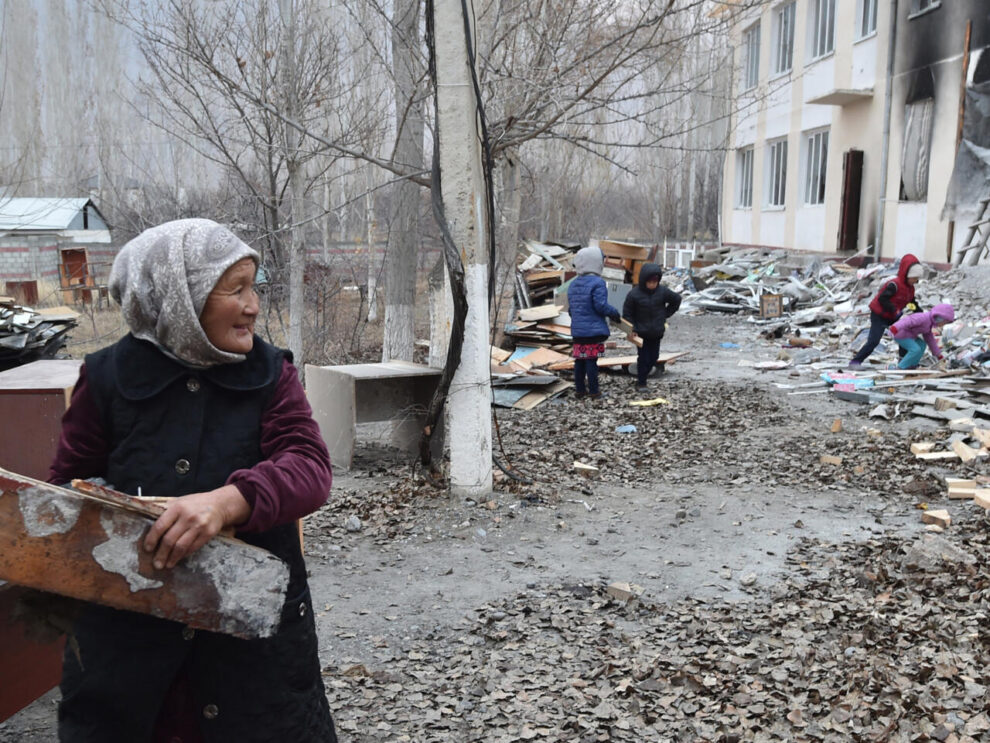Combing through the charred ruins of a primary school in the village of Ak-Say in Kyrgyzstan, teacher Nasipa Nishanbekova picks up dusty exercise books filled with children’s handwriting.
For the past three months, the school has lain abandoned after it was almost completely destroyed during border clashes between Kyrgyzstan and Tajikistan in September which killed more than 100 people.
“We fled on the morning of September 15. By the time we came back a few days later our school was burnt out,” Nishanbekova told AFP in the village in Kyrgyzstan’s Batken region, which lies just a few dozen metres from the Tajik border.
The fighting between the two impoverished former Soviet republics, which have been locked in border disputes since gaining independence in 1991, was the worst in decades.
Tensions have risen recently as Russia, which has traditionally been the mediator between the two, is preoccupied with its campaign in Ukraine.
‘Lost everything’
Kyrgyzstan and Tajikistan share hundreds of kilometres of disputed border and — to make things more complicated — there are also various Tajik and Uzbek enclaves within Kyrgyz territory.
The result has been constant tension over access to transport routes and resources, particularly over water in farming regions.
During the clashes in September, Kyrgyzstan and Tajikistan accused each other of attacks and incursions in dozens of border areas.
A ceasefire is now in place and the two countries say they are holding negotiations over the border, with few tangible results so far.
Reconstruction has been slow in the destroyed villages, where there are fears of a new flare-up.
At the Ak-Say school, the sounds of hammers, cement mixers and pneumatic drills are everywhere.
In the rubble, where children still come to play, lies a pile of chairs, a broken vase and a history book about the Soviet Union.
Through the school’s broken windows, the cold seeps into the corridors as winter takes hold in a village surrounded by 3,000-metre (9,840-foot) mountain peaks.
In the nearby settlement of Kapchygai, which has been almost entirely destroyed, the main road leads to a field in Tajikistan.
Abdimitalip Masaliev says he “lost everything” after fleeing his home in September.
“When I came back (the Tajiks) had stolen everything,” the former veterinarian says, standing in the ruins of what was once his bedroom.
Masaliev brings plov — a traditional rice-based dish with vegetables and meat — to the workers rebuilding his house.
The bright brick structure contrasts with the charred foundations of his garage.
Bullet holes still mark the walls of a shed which miraculously stayed standing.
‘I came in solidarity’
Kyrgyz authorities admit that reconstruction has been slow, but teams of workers are now coming to the area from across the country to try to finish the work as soon as possible.
“I came in solidarity,” says Kuvatbek Yuldashiev, standing by a cement mixer and chewing on naswar — a type of tobacco popular in Central Asia.
The emergencies ministry in Batken region said 140,000 people were evacuated in September.
Four thousand people had still not been able to return to their homes by the beginning of December.
Some live in temporary housing. In Batken, the regional capital, a college has had its classrooms turned into dormitories.
In the courtyard, women draw water from a tanker with punctured wheels.
Kymat Kurbanova, 77, is one of 30 displaced people living in the college. She says she would “love to go back and live like before” in Kapchygai, but feels safer in Batken.
“I was in my house when people came and shouted ‘Run! Run!’
“Then the shooting started. I saw my neighbours’ houses burning,” she says tearfully.
Kurbanova is afraid the violence will resume and hopes young people can have “a peaceful life”.
Source : France24















